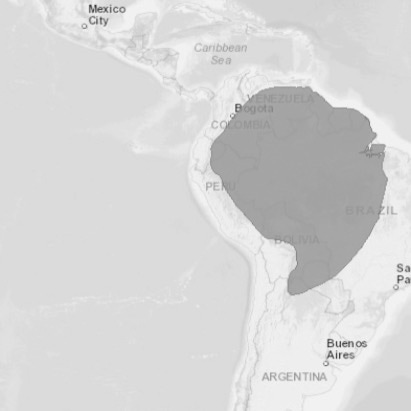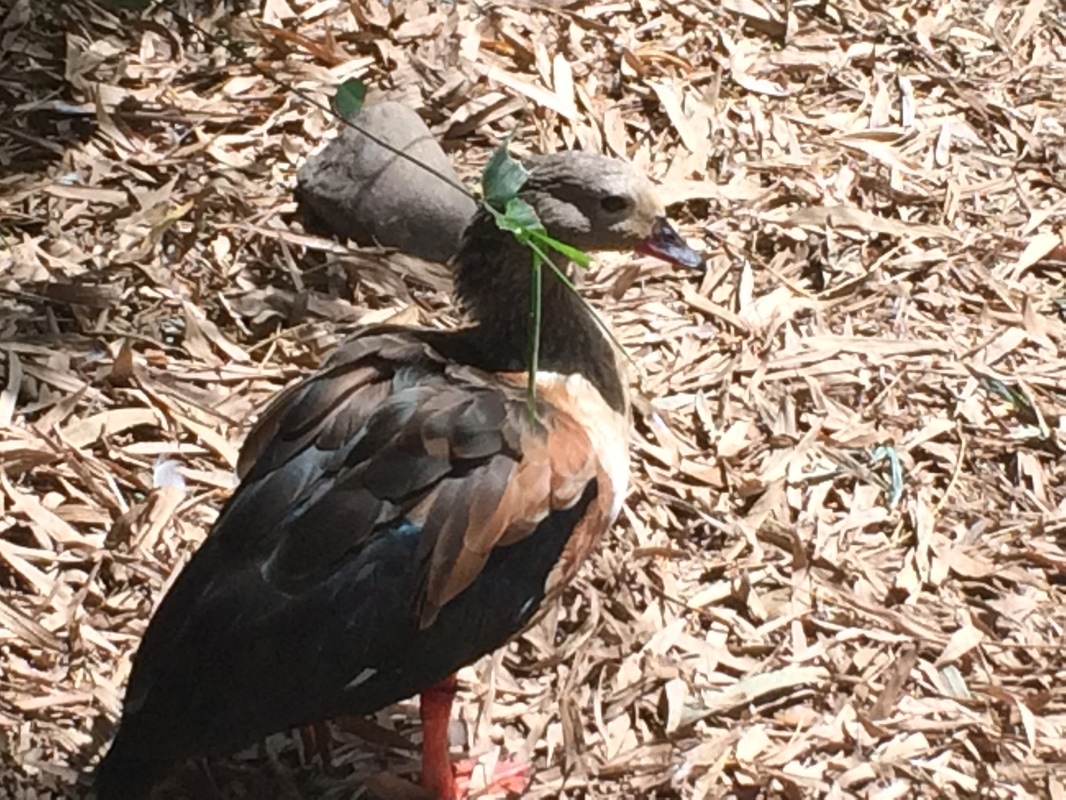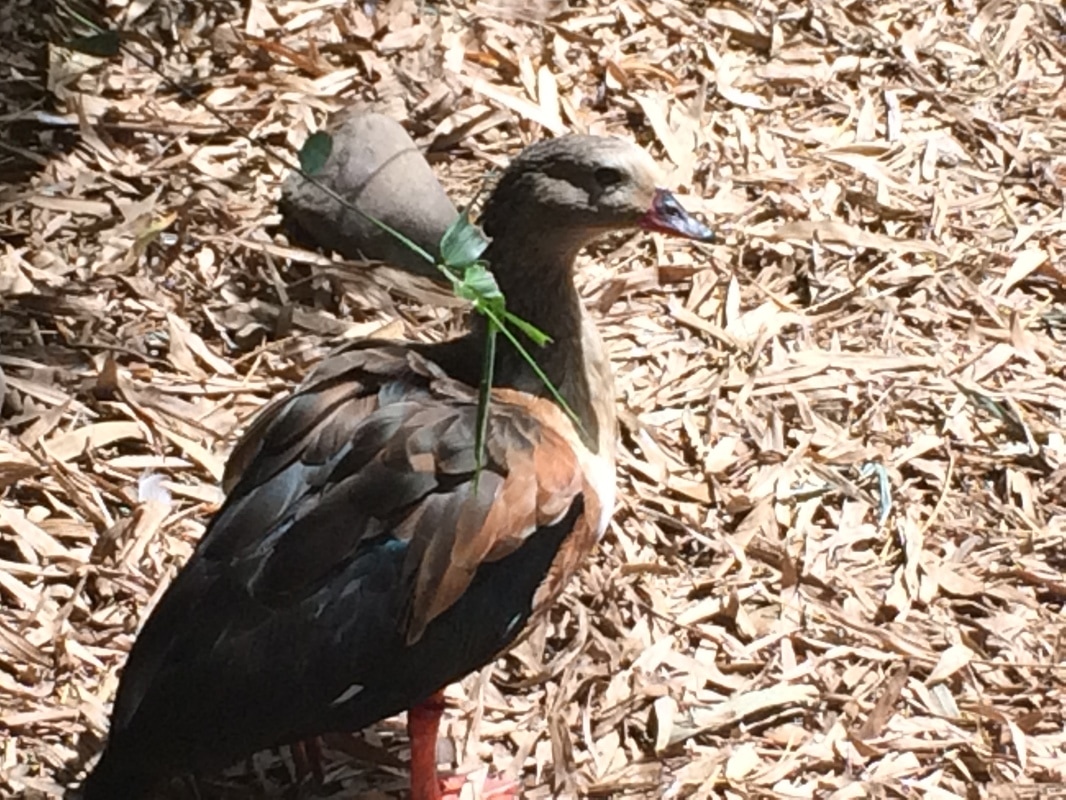Orinoco Goose- Neochen jubata
|
Rangge: Venezeula, Ecuador, Brazil,Bolivia, Peru and Colombia
Size: ♂:66–81 cm (26–32 in) ♀:66–81 cm (26–32 in) Weight :♂: 2.94–3.9 kg (6.5–8.6 lb) ♀ : 1.95–3.05 kg (4.3–6.7 )lb) Wing: ♂: 116–153 cm (46–60 in ♀: 116–153 cm (46–60 in) Habitat: wetlands Incubation: 33-35days Eggs: 6-13 Fledge: 14 weeks Sexual maturity: 12 months Nest: tree hallows Social: pairs Breeding: monogamous Movement : sedentary Food: Aquatic seeds and plants IUCN: endangered Subspecies : Monotypic Longevity: captive: 20 years Wild: 10 years |
The Orinoco Goose is member of the Tadorinae subfamily of the Anatidae family. This subfamily contains the shelducks and sheldgeese. The genus Neochen contains only two species; both native to South America. The other species is the Andean Goose A. melanoptera.
A terrestrial species the orinoco goose spends little time in the water and rarely flies. Although it usually breeds in tree cavaties it spends most of the time on the ground. Although this species has a large range it is listed as Near Threatened by the IUCN. This is due to the rapid decline of its population. The major human threat to the orinoco goose is over hunting. |



